How Speech Therapy Helps Kids With Autism Communicate
Understanding Communication Challenges in Autism
Children diagnosed with autism spectrum disorder often face unique challenges in both verbal and non-verbal communication. These challenges can affect how they express needs, interpret social cues, and engage with others, which can impact their daily lives and social integration. Speech therapy, led by specialized speech-language pathologists, offers tailored support to help address these obstacles. Through targeted interventions, therapy aims to facilitate meaningful communication, enhance social understanding, and promote greater independence. This article explores the vital role speech therapy plays in supporting children with autism to communicate more effectively and confidently.
Foundations of Speech Therapy for Children with Autism
How does speech therapy support children with autism in developing communication skills?
Speech therapy plays a crucial role in helping children with autism improve both verbal and non-verbal communication. A speech-language pathologist (SLP) assesses each child’s unique communication strengths and challenges, which guides the development of tailored therapy goals.
The therapy aims to enhance a variety of skills, including speech production, understanding language, using gestures, and employing alternative communication tools such as sign language or picture systems like PECS. These interventions are designed to make communication more effective and functional, helping children express their needs and feelings more confidently.
In addition to developing spoken language, speech therapy emphasizes social communication skills. This includes understanding body language, interpreting social cues, and responding appropriately during interactions. The use of augmentative and alternative communication (AAC) devices, like iPads with speech-generating apps or specialized speech output devices, supports children who are non-verbal or have limited speech.
Overall, speech therapy not only enhances a child’s ability to communicate but also reduces frustration and problematic behaviors by providing clear, alternative ways to connect with others. This comprehensive approach fosters greater social inclusion, independence, and emotional well-being.
What is involved in the assessment process conducted by speech-language pathologists (SLPs)?
SLPs begin with a thorough evaluation to understand each child’s communication profile. This process includes observing how the child understands and uses language, assessing speech articulation, and evaluating non-verbal skills like gestures and eye contact.
The assessment often involves play-based activities, standardized tests, and parent interviews. It helps identify specific difficulties such as delays in speech development, articulation issues, or challenges with social communication.
Based on the assessment results, the SLP develops a personalized therapy plan with achievable goals. Continuous monitoring and adjustment ensure the therapy remains aligned with the child’s evolving needs.
Which types of communication are addressed through therapy?
Speech therapy covers a broad spectrum of communication skills. For children with autism, the focus often includes:
| Communication Type | Description | Therapy Focus |
|---|---|---|
| Verbal | Spoken words and sentences | Enhancing vocabulary, pronunciation, sentence structure |
| Non-verbal | Gestures, body language, eye contact | Teaching gestures, interpreting non-verbal cues |
| Augmentative and Alternative Communication (AAC) | Visual icons, sign language, digital devices | Using systems like PECS, speech output devices, iPads |
By working on these different modes of communication, therapy aims to improve overall understanding and expression in various settings, promoting social interaction and independence.
Benefits of Speech Therapy for Children on the Autism Spectrum
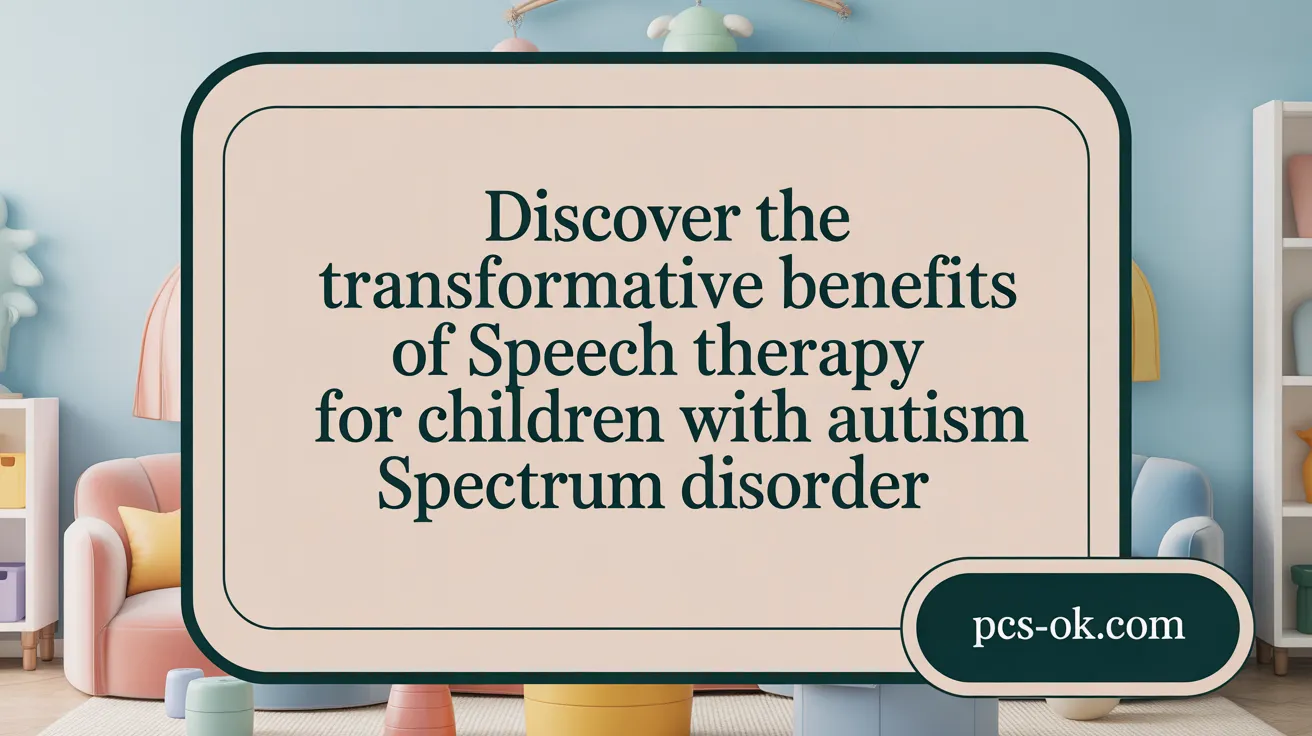
What are the benefits of speech therapy for children with autism?
Speech therapy provides significant advantages for children on the autism spectrum by addressing both verbal and nonverbal communication challenges. These improvements allow children to express their needs, wants, and feelings more clearly, reducing frustration and emotional distress.
One major benefit is enhancing social skills. Speech therapy helps children understand and interpret body language, facial expressions, and social cues. This understanding fosters better interactions with peers and adults, helping improve friendships and social confidence.
For children who are non-verbal or have limited speech, speech therapy often incorporates augmentative and alternative communication (AAC) methods. These include sign language, picture exchange systems like PECS, and speech-generating devices such as tablets and specialized apps. These tools enable children to communicate effectively, even if they do not use spoken words.
Starting therapy early is crucial. Early intervention maximizes developmental gains in language and social skills, leading to more positive lifelong outcomes. Children who receive prompt therapy tend to show increased confidence as they learn to express themselves independently.
Further, speech therapy supports emotional well-being and reduces problematic behaviors linked to communication struggles, such as meltdowns or aggression. It also boosts confidence and independence, encouraging children to participate more actively in everyday activities.
Overall, speech therapy helps children with autism become more effective communicators, which is essential for successful social interaction, learning, and adapting to their environment.
Techniques and Approaches in Autism-Specific Speech Therapy

Which techniques and approaches are commonly used in speech therapy for children with autism?
Speech therapy for children with autism employs a variety of methods tailored to individual needs. Among the most prevalent are behavioral and developmental strategies.
Behavioral interventions such as Applied Behavior Analysis (ABA) are widely used. ABA helps improve communication skills and reduces challenging behaviors by reinforcing positive interactions and responses.
Developmental methods like the Early Start Denver Model (ESDM) focus on play-based activities in natural settings. These methods help children develop language and social skills through engaging, everyday interactions.
Play-based and visual support techniques are fundamental. Therapists often teach essential words, use visual cues, and employ communication boards to bolster understanding.
Augmentative and alternative communication (AAC) devices, including picture exchange systems (PECS), sign language, and speech-generating tablets, are crucial tools. These assist children who are non-verbal or have limited speech.
Role-playing, social stories, and oral motor exercises are also key components. Role-playing simulates real-life scenarios, social stories prepare children for social interactions, and oral motor exercises strengthen mouth muscles for clearer speech.
Positive reinforcement is a central element across approaches. Encouraging children through praise and rewards fosters motivation and learning.
Child-led interaction, where therapy sessions follow the child’s interests, helps maintain engagement and encourages spontaneous communication.
Additional insights about speech therapy approaches for children with autism
| Technique or Approach | Purpose | Example Activities |
|---|---|---|
| Behavioral methods (ABA) | Modify behavior and develop communication skills | Reinforcing speech via rewards, reducing problem behaviors |
| Developmental methods (ESDM) | Promote natural language growth through play | Engaging in shared play, turn-taking exercises |
| Visual supports and PECS | Provide visual cues for understanding and requesting | Using picture cards, digital apps |
| Sign language and AAC devices | Enable communication without spoken words | Sign language, iPads, speech output devices |
| Role-playing and social stories | Prepare children for social situations | Practicing greetings, sharing activities |
| Oral motor exercises | Improve speech clarity and muscle strength | Blowing bubbles, mimicking mouth movements |
| Reinforcement and child-led activities | Encourage motivation and spontaneous use of language | Following child’s interests, storytelling |
These approaches are highly personalized. Many programs combine several methods with occupational therapy, social skills training, and caregiver involvement for comprehensive support.
Additional Resources
Search for ‘Speech therapy techniques for children with autism’ to explore more about specific interventions and tools used to enhance communication and social skills in children on the spectrum.
Facilitating Speech and Language Development through Therapy
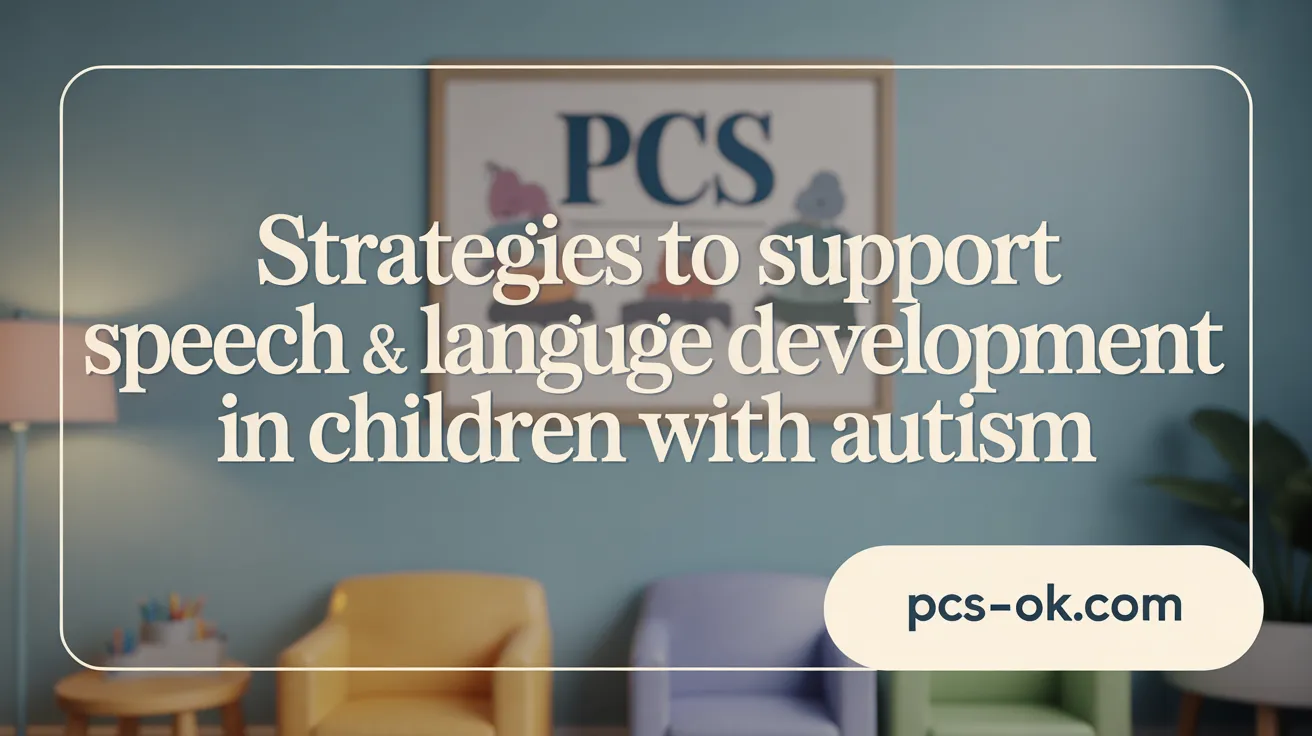
How does speech therapy facilitate speech and language development in children with autism?
Speech therapy plays a vital role in helping children with autism improve their communication skills. It starts with a detailed evaluation by a speech-language pathologist (SLP) to identify each child’s unique strengths and challenges. Based on this assessment, therapists set tailored goals such as improving speech clarity, expanding vocabulary, and enhancing social communication.
Therapists use a range of techniques to support development. For verbal children, this may include practicing articulation and building vocabulary through engaging activities like play, singing, and storytelling. For non-verbal children, AAC methods such as sign language, picture systems, and speech output devices like iPads are introduced to facilitate expression.
A significant part of the therapy focuses on understanding social cues and pragmatic language skills, including interpreting facial expressions, body language, tone of voice, and understanding social rules. These skills are essential in helping children engage effectively with their peers and adults.
In addition to building speech and language, therapy emphasizes teaching children to interpret non-verbal cues and respond appropriately, which are often difficult areas for children with autism.
Overall, speech therapy aims to promote spontaneous and functional communication. By fostering these abilities, children can become more confident, effective communicators in school, at home, and within the community, leading to better social relationships, academic progress, and independent living.
Topics covered:
- Individualized interventions and goal-setting
- Improving speech clarity and vocabulary expansion
- Teaching pragmatic language and social cues
- Using both verbal and augmentative communication methods
- Developing spontaneous and functional communication
More information:
Search query:
Enhancing Social Interaction and Understanding
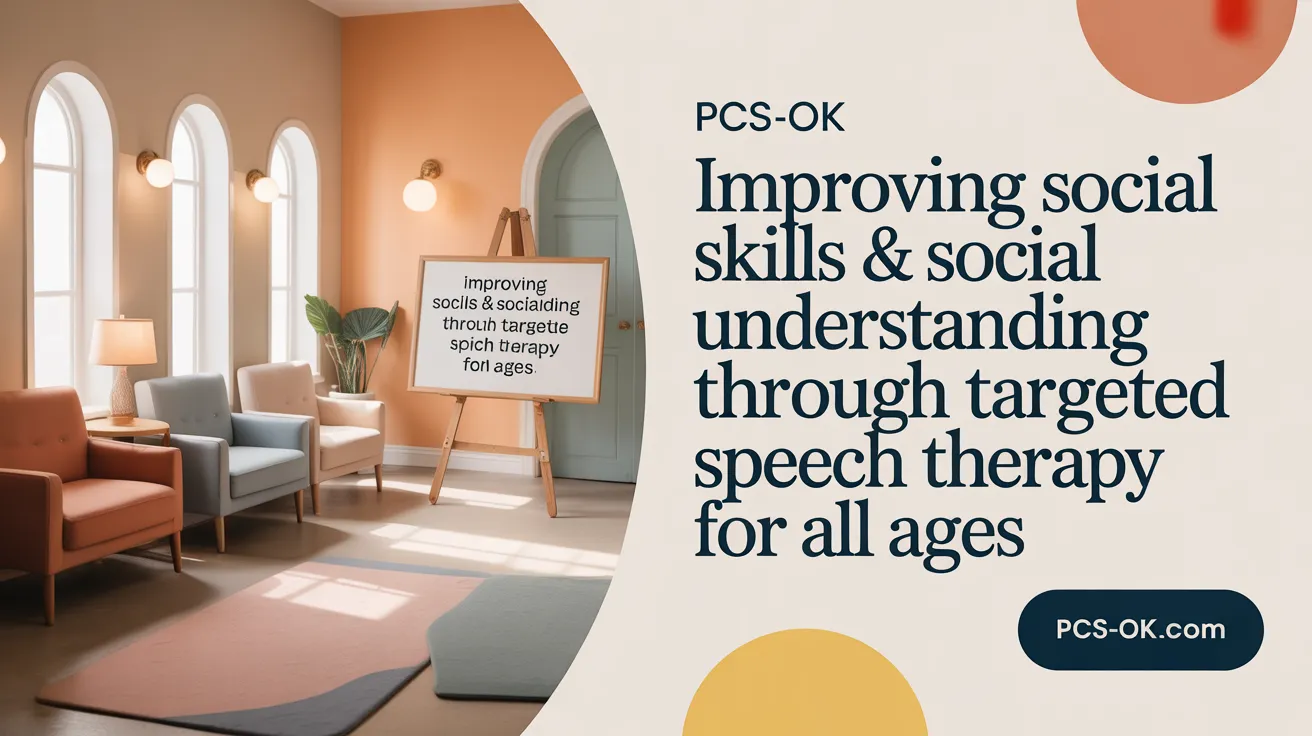
What role does speech therapy play in improving social interaction and understanding for children with autism?
Speech therapy is crucial in helping children with autism improve their social skills and interpret social cues effectively. It focuses on teaching children to initiate conversations, respond appropriately, and understand body language and facial expressions. These skills are fundamental for meaningful social interactions.
Therapists utilize a variety of techniques, including play-based activities that make learning engaging and relevant. Visual supports like social stories help children grasp social norms and expected behaviors in different settings. Structured social skills training, often involving role-playing, allows children to practice real-life social scenarios in a controlled environment.
Early intervention with speech therapy can lead to significant improvements in language abilities and non-verbal communication skills. As children develop these skills, they tend to be more confident in peer interactions and community activities.
To maximize progress, collaboration among speech-language pathologists, educators, and families is essential. Customized plans target each child’s individual needs and include strategies for generalizing skills beyond therapy sessions.
In the long term, these efforts help children with autism succeed socially, enabling them to form friendships, participate in group activities, and develop independence. Consistent support and practice ensure that children can navigate social situations more successfully, ultimately enhancing their quality of life and emotional well-being.
Family Involvement and Early Intervention: Keys to Progress
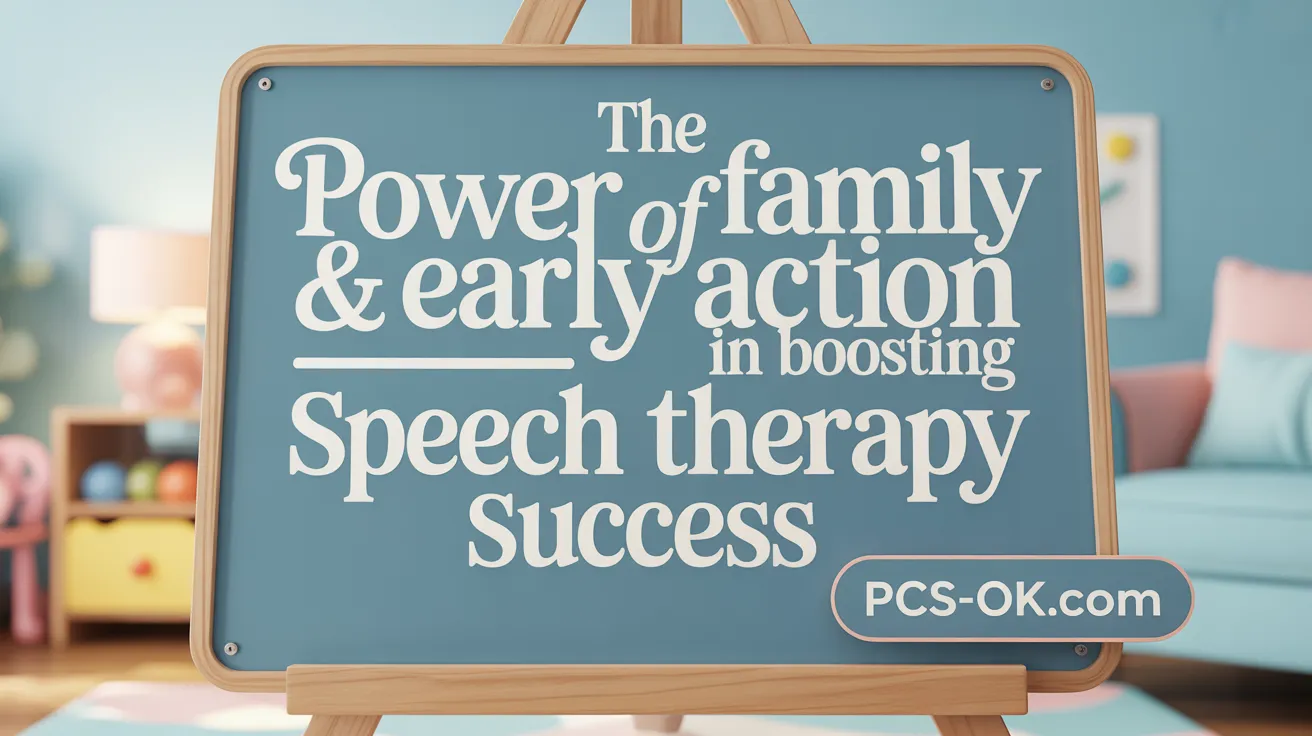
Why is family involvement crucial in speech therapy for children with autism?
Family participation is essential in the success of speech therapy. Caregivers serve as primary supporters who reinforce communication skills learned during sessions. Their encouragement and consistent practice at home help children develop confidence and retain new skills.
How can caregivers reinforce communication skills at home?
Families can incorporate strategies like narrating daily activities, encouraging the use of gestures, and practicing visuals or sign language. Playing interactive games, singing songs, and prompting turn-taking during everyday routines also foster language development.
What are the advantages of starting speech therapy early?
Early intervention can significantly improve language and social skills, leading to better long-term outcomes. Children who receive therapy soon after noticing delays tend to develop stronger communication abilities, which helps them navigate social environments more effectively.
How does therapy continuity support skill generalization?
Consistent practice across various settings ensures children transfer their skills beyond therapy sessions. Involving caregivers and teachers helps create a supportive environment where communication strategies are applied throughout daily life, promoting lasting progress.
| Aspect | Description | Additional Details |
|---|---|---|
| Family participation | Critical for ongoing support and reinforcement | Increases success rate, boosts confidence |
| Home practice | Reinforces skills between sessions | Includes narrating actions, using visual cues |
| Early therapy benefits | Leads to better language, social outcomes | Initiates when delays are observed |
| Skill transfer | Promotes application in different settings | Ensures durability of communication skills |
By actively engaging in their child’s communication journey and starting early, families can enhance the effectiveness of speech therapy programs, leading to meaningful improvements in everyday interactions.
Settings and Accessibility of Speech Therapy Services
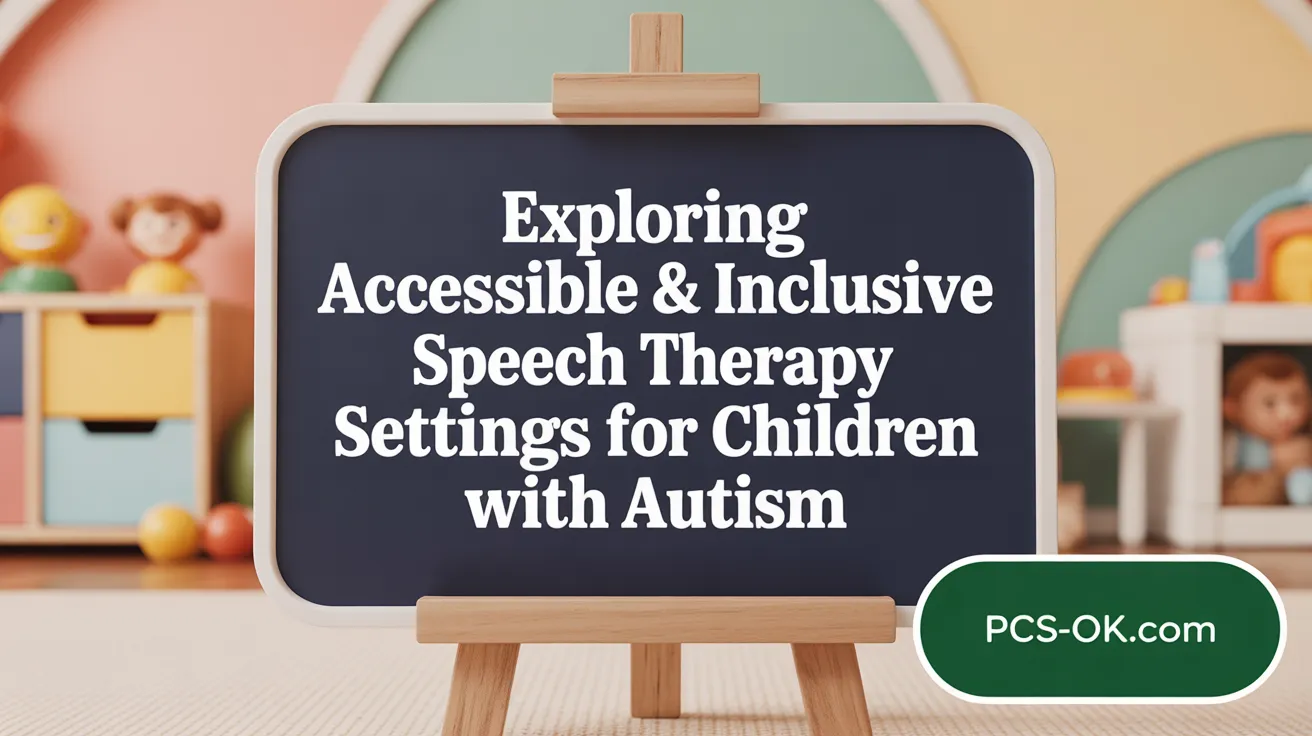
Speech therapy for children with autism is provided in a variety of settings to ensure accessibility and convenience. Common locations include private clinics, schools, homes, and community centers. Schools often offer services through Individualized Education Programs (IEPs), making therapy more accessible during school hours. Families can also opt for therapy at private clinics or in-home sessions, helping fit treatment into daily routines.
The professionals leading these services are licensed Speech-Language Pathologists (SLPs), who typically hold a master’s degree and often have additional credentials such as the Certificate of Clinical Competence in Speech-Language Pathology (CCC-SLP) from the American Speech-Language-Hearing Association (ASHA). Their expertise ensures tailored interventions suited to each child’s needs.
Insurance coverage plays a significant role in access to speech therapy. Many insurance plans, especially when therapy is deemed medically necessary, help cover costs. For children, funding options are available through programs like Early Intervention and special education services under IEPs, often providing therapy at minimal or no cost.
Early intervention programs are crucial, starting as soon as developmental concerns are identified, sometimes before an official diagnosis. These programs focus on improving communication and social skills early in life, saving long-term costs and fostering better outcomes.
Technology has become a vital component of modern speech therapy. Digital tools, apps, and devices such as picture exchange systems (PECS), speech-generating tablets, and specialized software support individualized learning and help children communicate more effectively, especially when verbal speech is challenging.
Overall, the combination of diverse settings, qualified professionals, coverage options, and innovative technological aids makes speech therapy accessible to many children with autism, enabling them to develop essential communication skills.
Empowering Children with Autism Through Speech Therapy
Speech therapy offers a comprehensive and individualized path for children with autism to develop effective communication skills, whether verbal or nonverbal. By addressing unique challenges through tailored strategies and supportive technologies, therapy not only improves language abilities but also enhances social understanding and emotional well-being. Early and consistent intervention, combined with active family participation and professional expertise, creates opportunities for children to express themselves confidently and engage meaningfully with their world. Ultimately, speech therapy plays an essential role in unlocking potential, reducing frustration, and fostering greater independence, helping children with autism build connections, learn, and thrive across all aspects of life.
References
- Speech Therapy
- Benefits of Speech Therapy for Children with Autism
- The Five Pillars of Speech Therapy for Children with Autism
- The Benefits of Speech Therapy for Children with Autism
- How Can Speech Therapy Help Kids With Autism?
- Speech-Language Therapy for Autism | NICHD
- The Role of Speech Therapy in Developing Verbal and …
- The Benefits of Speech Therapy for Autism | EA Schools
